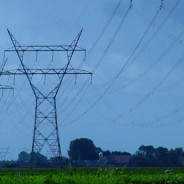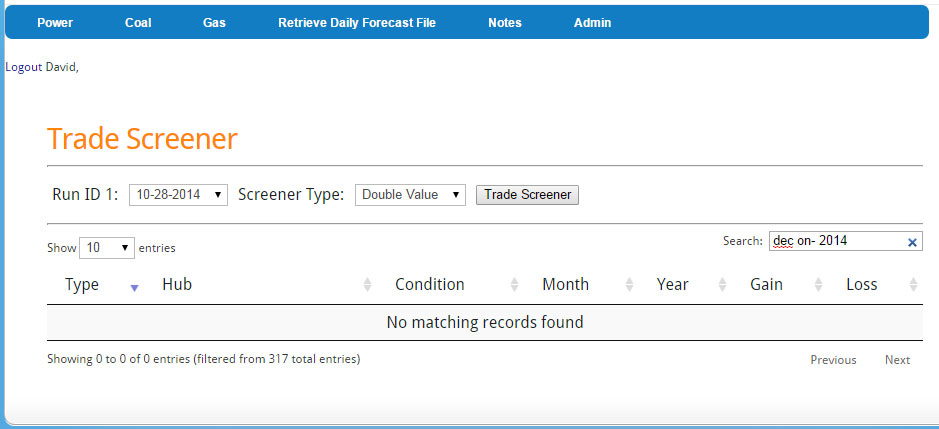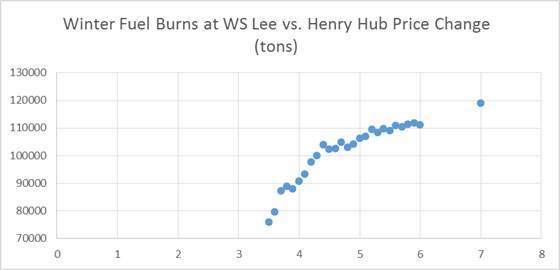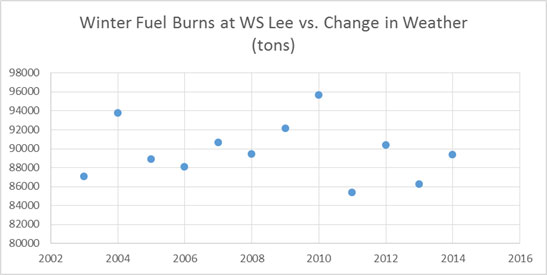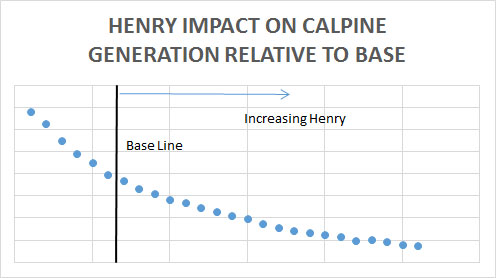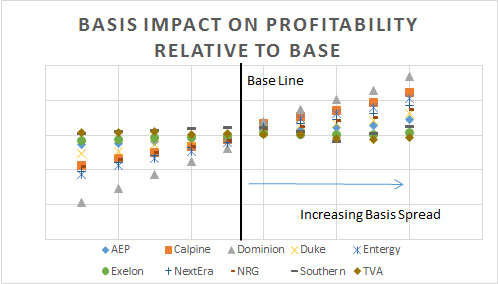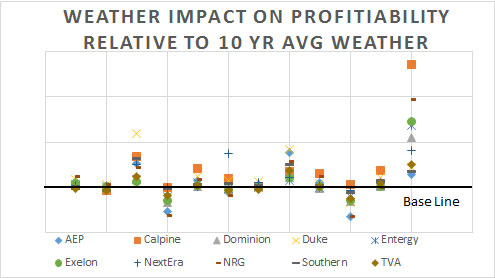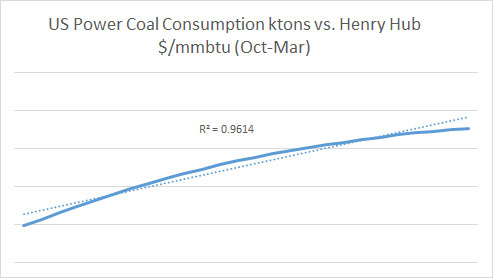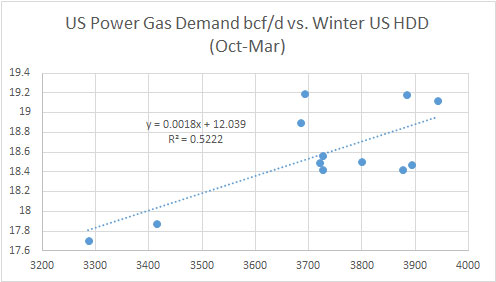Producing a Clean Hedge that is Defensible
Hedging can really be a gamble if not done right. The latest news from OW Bunker A/S highlights some of the concerns from hedging. The stock has fallen 60% largely as a result of uncertainty in the hedge taken by the company. In this case, it may very well been a clean hedge that was poorly timed (failure of analytics) or it was a “dirty” hedge which constituted a gamble in the market place. Either way the Chief Risk Officer has been fired.
I demonstrated last time in Effective Power Hedging that PMA can be used as an analytical tool to develop a systematic hedging program. I want to highlight the value of PMA as a career saving tool (AKA: cover your a** (CYA) tool) PMA can be customized to store and run every day. All the analytical background for decision making can be pulled up. I am sure management at OW Bunker A/S wish they had simulations at least demonstrating the risk/reward they saw when they made the hedge. With PMA, series of simulations can be pulled to justify the transaction. In addition, the Risk Officer would have liked the simulation to be developed from a third-party stand point. PMA does offer customization, but the backbone and secret sauce is the extensive work in calibrating the model to emulate the market prices and fuel consumption. You can throw the kitchen sink at PMA and it will return the appropriate value given the inputs into the model. PMA can be customized, but can be still considered external to your organization.
A failure of identifying the risk reward profile appropriately would come from your simulation lacking enough uncertainty. One can use PMA to backcast to “prove” the simulation supported an appropriate range of uncertainty. For those looking to manage and perform hedging in power I am strongly suggesting you reach out to me to show how PMA can potentially save your career. Not only do we have the tools to help you, but we have the experience and knowledge. In many cases, not hedging commodities that offer liquidity can be constituted as much gambling as a person who trades for profit. You can always be second guessed for your decisions. All Energy Consulting can give you support for your decisions or indecisions.
Note on your calendar, I will be speaking at an event in Dec 10-11 on Solving Commodity Risk Exposures for the power industry. * POSTPONED TO FEB 15 The event is focused on Energy and Commodity trading. I look forward to seeing many of you there.
Your CYA Energy Analyst,
David
David K. Bellman
All Energy Consulting LLC- “Independent analysis and opinions without a bias.”
614-356-0484
[email protected]
@AECDKB
blog: https://allenergyconsulting.com/blog/category/market-insights/
Sign Up to AEC Free Energy Market Insights Newsletter
Finding Winning Power Trades – The Process
Many people have asked me to further explain the process of coming up with my recommend best winter trade posted on October 9th, 2014 which on 10/28/2014 was up over 20% in less than a month. Obviously the root of finding the trade was to use Power Market Analysis Near Term (PMA-NT). As I have noted many times PMA-NT is more of a service than a product. The default setup is still very useful without any customization, which I will demonstrate here. PMA-NT default is based on the forward curve. In this setup, the arbitrage being found are the disconnects between gas futures and power futures. In essence, gas futures get lost in translation converting to power futures due to the moving parts in the power sector. PMA-NT can help find those translation errors. PMA-NT can also be fed your fundamental outlook of natural gas markets to find those disconnects.
Part of PMA-NT includes some very advance and powerful trading tools. There are about 650 trading opportunities calculated in the default PMA-NT within in just 1 case (more can be added). The PMA-NT default runs five potential scenarios of the future. In order to find out my best winter trade I used a new customizable trade screener tool called Double Value versus One Sided Screener. Double value screens out all the trades with at least a double value relative to the potential loss. This list quickly reduces the 650 trading options. Given I wanted a winter trade and something that didn’t hold the risk of the Vermont Yankee nuclear retirement I filtered the results for Dec 2014 Winter. I also wanted a liquid contract so I filtered for On-Peak. Then finally I sorted by Max gain. All this occurred on one page in less than a few key strokes – screenshot below.
In the five cases simulated on 10-08-2014, the results show two trades that qualify on the logic that I wanted On-Peak trades in Dec 2014 that would have the potential to gain more than twice the loss potential. Out of the five outlooks simulated by PMA, there was a case that showed a potential gain of $31.25/MWh if one sold the NY-J On-Peak Dec 2014 contract. Inversely there was a case that would show a loss of $6.5/MWh. The default 5 cases involved moving the Henry Hub prices and altering weather impacts. These cases can be customized for your region of interest. Further descriptions of the default cases are available.
Now that I have identified a trade of interest I didn’t just stop there. As noted in the previous article I am risk adverse and would like a way to mitigate against tail-events such as pipeline explosions to other unforeseen extreme events. In order to mitigate the risk I usually use a spread or heat rate play. In addition, 5 cases are not enough for me to put on a trade – good enough to identify a trade. The good news is I also had run a Winter Outlook. The winter outlook included 54 more cases to examine. It was clear to me the NY-J power forward price was being impacted from last year’s polar vortex. This risk is a potential reality, but it would seem to be less of a probability. However because of my risk adverse nature, I wanted to find a price hub that was not taking into account the polar vortex as much as NY-J. Therefore if a polar vortex would occur to the level seen last winter I could be covered somewhat. Out of my 54 winter cases included running last year’s weather outlook, but without all the extreme outages. Base on that simulation it shows the AD-Hub having some room to run up with a polar vortex relative to the forward curve and relative to NY-J. The NY-J contracts seems to be limited as the “fear” premium is already in play.
Besides all these simulations I also did a walk back in history. There are many questions that needed to be understood. Polar Vortex last year was not really a January impact , how cold has it gotten in December and where did AD-Hub – NY-J spread moved to? As I noted in the previous article – From 2010 to 2013 December spread between AD-HUB minus NY-J went as wide as $-39/MWh in 2010. With the spread at $44/MWh I felt comfortable going with this trade as the best winter power trade.
Given the market changes in less than a month, it is a good thing PMA-NT is designed to run daily. The exact screener on 10-28-2014 shows no trade opportunities in the Double Value category. The AD-HUB minus NY-J spread likely should be closed given the 20% return – per my risk averse nature. I am sure there are other traders who can stomach the swings better than me – looking for an aggressive trading partner to work together to create a perfect balance.
At All Energy Consulting we understand supplying you with forecasts is only one step of the process and may even be the smallest value of the process. The real value comes from the interaction with us and the willingness to explain the process and have frank discussions on the results. We believe no other consulting product will offer this unparalleled experience. You will work directly with me, an experienced analyst from one of the top energy consulting company (Purvin & Gertz / now IHS, Deloitte) and one of the largest utilities in the industry (American Electric Power (AEP)). PMA-NT is not just a product, but more of a service. We want to work with you in understanding the volatile power markets.
This also applies to our long-term service PMA-LT. We can work with you to understand the impacts of various policies and develop a cohesive resource plan.
Please contact us at your earliest convenience. We look forward to beginning the conversation.
Your Willing to Work with You Energy Consultant,
David
David K. Bellman
All Energy Consulting LLC- “Independent analysis and opinions without a bias.”
614-356-0484
[email protected]
@AECDKB
blog: https://allenergyconsulting.com/blog/category/market-insights/
Sign Up to AEC Free Energy Market Insights Newsletter
Procure enough fuel this winter for your generating asset?
Fuel procurement for power plants has always been a tricky game, particularly when you add the element of cost. Buying too much fuel makes you look foolish and not buying enough makes you a gambler. Finding that sweet spot and the ability to justify the level of procurement is part of the Power Market Analysis (PMA) package. In this article, we will demonstrate the process of using PMA to find the right volume of fuel to purchase.
We randomly selected WS Lee coal plant in South Carolina and pulled out all the information from our 54+ scenarios we produced for this winter outlook. The key variables we examined in this example were load and gas price changes. PMA is designed for customization, so you can create custom cases for nuclear outages, hydro capabilities, fuel deliverability issues, coal pricing, etc…
For gas price impacts on fuel consumption, we examined Henry Hub prices from $3.5-$6/mmbtu and added a stress point of $7/mmbtu. The graph below shows the amount of tons of coal consumed in the various price changes. The reference case used a varying strip (forward curve 9/24/2014) averaging $4.03/mmbtu.
We like to look at it as it relates to the Base run. This view enables you to quickly assess the changes as function of a reference point. This also allows one to recalibrate to your actuals as the model is only a proxy and does not contain your exact cost structure and operational details. A custom PMA can be created to emulate your units cost and operational details. The percentage view gives a good assessment and allows easy comparison to other variables without worrying about the exact numbers. Based on the below graph, we can conclude the risk of gas prices moving up $1/mmbtu could lead to a 20% increase in WS Lee fuel consumption.
Another gas price impact view was to change the basis price. In this example, we took basis around the country and multiplied it by a percentage. So in the case labled 50 – we multiplied the basis spread by 50% making it half as small as the reference point. Inversely the 150 case makes it 50% higher. The absolute and percentage cases are shown below.
Given the facility is located in S. Carolina, it is reasonable to expect this unit to be less sensitive to basis versus Henry Hub changes. WS Lee, from this analysis, does not have to worry about basis causing significant variance in fuel consumption. However it is prudent and reasonable to be prepared to procure ~20% from base expectations given the real possibility of $5/mmbtu Henry.
For load we looked at the last 12 years of actual weather and simulated each year into the model. The following graph shows the changes in WS Lee coal consumption and the percentage from base.
Once again, because we chose WS Lee a coal plant in S. Carolina – weather variance in the winter time is less important relative to a gas unit in the Northeast. However weather would support procuring almost 10% above base expectations given a recent actual weather event (2010) did necessitate 7% more burn from the 10 year average.
Several more custom runs could be generated from nuclear to coal outages to coal pricing (transportation & mine price) that would aid in the justification of the level of coal procurement of WS Lee. Using this example, a clear and precise justification can be made to procure somewhere between 10-20% more than the base expectations given the weather and natural gas market variance.
This demonstration used the analysis for this winter season, but this could easily be done for many months to years out. PMA can easily be used as a third-party validation to your procurement process. Avoid any accusations of being a fool or a gambler – sign up to PMA and start creating your custom run. PMA is more than just output – it is a proven process and platform designed just for you. We give enough customization, but allow you to still refer to it as a third-party source due to our involvement in the process.
Your Looking Out for You Energy Analyst,
David
David K. Bellman
All Energy Consulting LLC- “Independent analysis and opinions without a bias.”
614-356-0484
[email protected]
@AECDKB
blog: https://allenergyconsulting.com/blog/category/market-insights/
Best Winter Power Trade
I have been asked many times what the best trade is for this winter based on our product Power Market Analysis Near-Term (PMA-NT). PMA-NT, unlike other consulting products, is designed to have a business partnership relationship vs. typical vendor product relationship. We work with our clients to design and build custom forecasts to the point they feel PMA-NT is an augmentation of their analytical department. The product is designed to be customized by allowing clients to feed in their own weather forecast to commodity prices. Essentially, any input into the power model can be overwritten in order for you to have a smooth transition from what you are doing now. In addition, the output can also be customized.
The initial setup for PMA-NT does hold significant value as a trading and hedging tool. It was designed based on the 12+ years of power modeling experiences from utility trading and planning perspective to hedge fund trading of power and gas perspective. However it takes a holistic approach in dealing with risk. For many, this will be fine. For those of you focused in a particular region, you will likely not want an extreme weather case for N. America, but an extreme case for your region of interest. Every region in the US holds unique characteristics. Power trading in the west will likely want to have hydro sensitivities as part of their high and low cases. Those in the East will want basis sensitivities. The initial setup does neither of these as it takes a generic view, but the capability is clearly possible. Our Outlook runs (50+) do incorporate these risk factors, but the day to day running of the initial setup of PMA-NT does not since the goal is to get an overall understanding on the markets with weather, gas prices, and outages being the prime drivers. Once again, PMA-NT is designed for you so you can have a day to day run with your focused area with your data feed. When you succeed, we succeed. That is the core of PMA-NT. We believe in our working relationship model so much we are willing to offer a no-cost solution to a few candidates as long as we get to share in the profitability of the trade book.
With that being said, the initial setup best trade for winter from my perspective is to buy the December On-Peak spread of AD-Hub minus NYJ (Buy AD-Hub and sell NY-J). I prefer spreads as spreads mitigate some risk and I am not as risk averse as perhaps others are. I prefer spreads as spreads mitigate some risk and I am not as risk averse as perhaps others are. My criteria for the best was the trade with the most to gain with limited risk.
Justification: Last winter’s extreme weather seems to be priced into December – NYJ power prices (Dec13= $73/MWh vs. Forwards Dec14(10/08/2014)Avg=$88/MWh vs 2010-2013 Dec Avg=$63/MWh). Whereas AEP-Hub prices seem to be less weather impacted from last year (Dec13 Avg= $41/MWh vs. Forwards Dec14(10/08/2014)Avg=$44/MWh vs 2010-2013 Avg=$40/MWh). The extreme cold from last winter was more apparent in month January-March, which is surprising to see so much strength in NY-J this December. From 2010 to 2013 December spread between AD-HUB minus NY-J went as wide as $-39/MWh in 2010. If December does get cold, there is much more run-up room for AD-Hub than NY-J. Therefore, the spread will improve from its current $-44/MWh. However, if the winter is more normal, or even mild, expect NY-J to collapse more than AD-Hub – once again the spread will gain. There are areas to investigate, such as the possibility of operations at power plants this winter being better than it was last winter – as discussed in my previous article. This would act against the spread play, given PJM has more diversity of plants to improve upon the cold weather operations compared to New York. Entergy’s Vermont Yankee nuclear plant will not be available this winter as it is being decommissioned. This is in our initial setup, but the retirement is not expected till after the end of this year. The model does not have a sell on NY-J going into Jan perhaps because of this issue. From the winter outlook (50+sensitivities) only the basis moving up another 50% would get near the forward markets spread. Before setting forth to buy the spread, I suggest running a few more sensitivities, such as an earlier retirement of Vermont Yankee, and having a dialogue about all the factors that could lead to further widening of the spread. This is the working relationship I am describing for clients of PMA-NT.
At All Energy Consulting we understand supplying you with forecasts is only one step of the process and may even be the smallest value of the process. The real value comes from the interaction with us and the willingness to explain the process and have frank discussions on the results. We believe no other consulting product will offer this unparalleled experience. You will work directly with me, an experienced analyst from one of the top energy consulting company (Purvin & Gertz / now IHS, Deloitte) and one of the largest utilities in the industry (American Electric Power (AEP)). PMA-NT is not just a product, but more of a service. We want to work with you in understanding the volatile power markets.
This also applies to our long-term service PMA-LT. We can work with you to understand the impacts of various policies and develop a cohesive resource plan.
Please contact us at your earliest convenience. We look forward to beginning the conversation.
Your Willing to Work with You Energy Consultant,
David
David K. Bellman
All Energy Consulting LLC- “Independent analysis and opinions without a bias.”
614-356-0484
[email protected]
@AECDKB
blog: https://allenergyconsulting.com/blog/category/market-insights/
What are the risk factors for AEP, CPN, D, SO, EXC, NEE, DUK, NRG, TVC, ETR, and more this winter?
Going into the winter, the key variables that drive the profitability of a generation portfolio will be the price of Henry Hub, Basis, and Weather. Our Winter Power Outlook dispatches the entire N. America power system. Every asset is modeled. We have pulled together the top 10 generating portfolios under our 50+ cases to show you the impact of those variables. The information is not perfect in the sense that we do not know exactly what they have hedged or not hedge – nor do we adjust for any potential bi-lateral deal. However, the output represents the free market performance which will indicate key risk factors in how their portfolio will perform. If you have a particular set of assets or just one unit you are interested in, we can pull that information for you.
Expectations on Henry Hub are narrowed around $4/mmbtu. However, last winter, we saw Henry Hub climb to over $6/mmbtu in the winter. Running over 28 simulations of Henry Hub, the redacted (sign up to receive the Winter Power Outlook to get all the data behind each figure) figure below shows the impact of the 10 generation portfolios.
The most sensitive to the price of Henry Hub is NRG followed by AEP. NRG could potentially see an upside of almost 100% if Henry Hub prices move to our higher end range. The least impacted by changing Henry Hub are NextEra and Calpine fleet. The Calpine slope is interesting as it seems somewhat counterintuitive. Examining Calpine fleet shows that they have the lowest gas heat rate (efficiency of plant – low HR= highest efficiency) fleet ~7.8 mmbtu/MW. In addition, their fleet is 90+% gas compared to the next highest at 60%. The combination does not help them if gas prices were to stay low. Their units do generate more as the gas prices go down, but this does not lead to greater profitability – see figure below. The good news for the generating assets is the slope of profitability is asymmetrical – more upside than downside. This logic has supported some lack of action to hedge power. However, there is always a point where some hedging would be logical particularly for regulated assets and those trying to manage earnings expectations. AEC can help identify those points.
Reviewing the basis impact shows the risk reward as being much more symmetrical. The redacted figure below shows Dominion generating portfolio seeing the most impact if basis were going to change followed by Entergy. This makes sense for both given their exposure to the east basis. The least impacted by basis change are TVA and Exelon. Given this knowledge, Dominion and Entergy should be trading/hedging themselves for basis risk.
In terms of weather risk, we ran the last 12 years weather pattern in our models and compared it to the 10 year average. The following redacted figure was produced. In terms of weather risk, it is also very asymmetrical as in Henry Hub. In general, there is more upside on a cold winter than downside on a warm winter. However, in AEP’s case, that difference is very narrow given the historical weather pattern. They almost have as much to lose on a warm winter as they can gain on a cold winter. Calpine can produce the greatest gain if weather were to duplicate last year’s pattern. The fleet with the smallest standard deviation from the 10 year average weather pattern was Southern. This makes sense given the geographical location.
Subscribing to the Winter Power Outlook can get you all this analysis. All this analysis is available to you for only $3000. We will also supply a free 1 month access to PMA-NT. Plus if you are the first five customers you can get a custom scenario based on the permutations already used. You can create your very own extreme case (e.g. Basis up 30%, 2013-2014 Weather, Plus Henry at $5.5/mmbtu, double forced outage rates). There is no other place to get so much information for so little. The report will be even larger and more comprehensive than the Summer Outlook we produced this year. If you take the time to review and understand the report, you will be fully prepared to understand the risk and key variables driving the power markets this winter.
The above analysis can be customized for you. If you want to understand how a generation portfolio may be impacted by weather, price, load, environmental policy, hydro generation, nuclear outages, etc…we can process it through our PMA models to get you your portfolio outcome. Output can range from profitability, fuel consumption, generation by month. The time period can be as little as one month to as long as 20 years.
Please call or email to sign up for the Winter Power Outlook, PMA-NT , PMA-LT or a custom run. [email protected] or 614-356-0484.
Your Grateful Energy Consultant,
David
David K. Bellman
All Energy Consulting LLC- “Independent analysis and opinions without a bias.”
614-356-0484
[email protected]
@AECDKB
blog: https://allenergyconsulting.com/blog/category/market-insights/
Winter Power Fuels Consumption Sensitivities (Gas & Coal)
As noted in my previous write up, we could see a record amount of natural gas demand in the power sector if certain stars align. One of the major drivers is the price of natural gas. The two price components for natural gas is the benchmark location of Henry Hub price and the basis (price differential to Henry Hub). In this Winter Power Outlook report, we ran over 50 cases. Our gas price sensitivities included changing Henry Hub (28 sensitivities) and then just changing basis prices (10 sensitivities). The below figure is a redacted output from the report.
For this winter, the correlation with Henry Hub price and power natural gas demand is very linear. With the purchase of this report for only $3000, you will get the data and the associated linear equation. This will give you grounds to estimate the power markets natural gas demand as a function of your expectations of Henry Hub.
Changing the price of Henry Hub also altered the coal demand. The redacted figure below shows the relationship of coal demand and Henry Hub. As in the natural gas demand figure, the coal demand outlook is very linear with the changing Henry Hub price.
Changing basis by a set percentage from 50% to 150% did not significantly alter the gas demand. The basis impact altered gas demand by +/-2%. However, power prices did significantly change. In the Nepool region, the basis sensitivities produced nearly a +/-30% swing in on-peak power prices – see below figure. The winter report will contain price output for all major power hubs in N. America with the associated simulations.
A common mechanism used in the industry to estimate natural gas demand is the usage of a relationship with Heating Degree Day (HDD). However, in the power sector, that relationship is very fragile as location and price relationships can cause a non-linear relationship. The figure below demonstrates this with simulations of each weather year between 2003 and 2013.
For only $3000, our Winter Power Outlook report will have enough information for you so there will be no guessing to what the power markets will do for gas and coal consumption under various scenarios, whether it be price, weather, or unit performance. The first 5 subscribers will also be able to create their own custom outlook run. You can select and combine various weather years, change henry, and/or change basis price. We will run your custom case and give you all the output from that case. In addition, to the report you will get access to PMA-NT for one month. PMA-NT updates daily, therefore you will always have an updated third-party view of the near term market (2-3 years). PMA-NT can be used for hedging or trading as demonstrated in our previous articles – Effective Power Hedging and Excellent Returns.
A new product is coming. PMA-LT will be released soon. PMA LT is a monthly forecast out to 2035 produced quarterly. Given the long-term outlook, a fundamental gas view point was developed in coordination with RBAC the makers of the GPCM® Natural Gas Market Model. The quarterly outlook will present monthly prices for all major N. American power hubs. In addition, a report will be included to support the outlook. Description of retirement and expected new builds will be detailed in the report. PMA LT subscribers can get access to gas pricing and a report supporting the gas fundamental outlook. Customization of long-term outlook (e.g. Carbon policy) is also available to subscribers.
Please call or email to sign up for the Winter Power Outlook Report or PMA-NT or PMA-LT [email protected] or 614-356-0484.
Your Grateful Energy Consultant,
David
David K. Bellman
All Energy Consulting LLC- “Independent analysis and opinions without a bias.”
614-356-0484
[email protected]
@AECDKB
blog: https://allenergyconsulting.com/blog/category/market-insights/
Sign Up to AEC Free Energy Market Insights Newsletter


